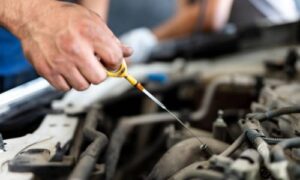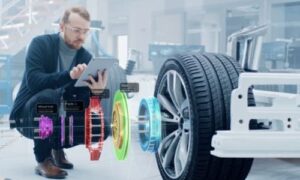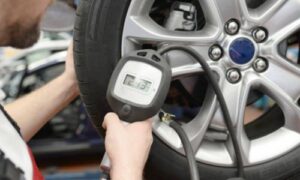Engine Light Warning? Your car’s dashboard is a vital communication centre, with lights and symbols informing you about your vehicle’s health. But none strike as much fear (or confusion) as the dreaded check engine light. Often accompanied by a sinking feeling in your gut, the question arises: Should I ignore the check engine light?
The answer is a resounding no. Here’s why that illuminated icon shouldn’t be taken lightly and what you should do instead.
Check Engine Light Warning
The check engine light, technically called a malfunction indicator lamp (MIL), is your car’s way of saying, “Hey, something’s not quite right down here!” It acts as a broad warning system, triggered by the car’s computer (ECU) when it detects a problem within the engine, emissions system, or other critical components.
While the light doesn’t pinpoint the exact issue, it is a crucial prompt to investigate further. Ignoring it can lead to a cascade of consequences, ranging from:
- Decreased Fuel Efficiency: A malfunctioning system can cause your car to burn more gas, impacting your wallet and the environment.
- Performance Issues: You might experience sluggish acceleration, hesitation, or stalling.
- Increased Emissions: A compromised emissions system pollutes more, potentially leading to stricter regulations during inspections.
- Costlier Repairs: Ignoring a minor issue can snowball into a major problem, driving up repair costs significantly.
- Safety Concerns: In severe cases, a neglected check engine light warning can lead to engine damage or component failure, posing a safety risk while driving.
Here’s the key takeaway: The check engine light is your car’s early warning system. Addressing the issue promptly can prevent minor problems from morphing into expensive repairs and potential safety hazards.
Steady Glow vs. Frantic Flash: Decoding the Check Engine Light’s Urgency
Not all check engine light warnings are created equal. The light’s behaviour can offer clues about the severity of the problem:
- Steady Illumination: This typically indicates a non-critical issue, like a loose gas cap or faulty sensor. While you shouldn’t ignore it, you can usually drive the car to a mechanic for a diagnosis without immediate risk.
- A flashing Light signifies a more serious problem, potentially an engine misfire or a failing catalytic converter. In this case, pull over safely as soon as possible and avoid further driving to prevent significant damage.
Remember: When in doubt, err on the side of caution. A mechanic check-up can provide peace of mind and prevent future headaches.
Cracking the Code: How to Diagnose the Check Engine Light
Unfortunately, the check engine light doesn’t tell you the exact problem. To diagnose the issue, you’ll need some additional tools:
- OBD-II Scanner: Most modern cars have an onboard diagnostics (OBD-II) port. This port allows a mechanic to connect a scanner that retrieves diagnostic trouble codes (DTCs) stored by the car’s computer. These codes pinpoint the specific problem area, making diagnosis and repair more efficient.
- Mechanic’s Expertise: While some OBD-II code readers are available for consumer use, interpreting the codes and repairing the underlying issue is best left to a qualified mechanic. They have the knowledge, experience, and specialized tools to diagnose and fix problems effectively.
Taking Charge: What You Can Do When the Check Engine Light Comes On
Here’s a step-by-step guide on how to handle a check engine light situation:
- Don’t Panic: Take a deep breath and remember, the light is a warning, not a death sentence for your car.
- Observe Your Car’s Behavior: Are there any noticeable changes in performance, like rough idling or decreased power? Note any symptoms to share with the mechanic.
- Check the Simple Things: Sometimes, the issue might be a loose gas cap or a faulty sensor. Try tightening the gas cap and see if the light goes off after a few restarts.
- Invest in a Basic OBD-II Scanner (Optional): This can provide you with basic DTC codes, offering a glimpse into the problem area. However, proper diagnosis and repair still require a mechanic’s expertise.
- Schedule an Appointment with a Mechanic: Don’t procrastinate! The sooner you get the issue diagnosed, the sooner you can address it and prevent further complications.
Following these steps, you can effectively navigate a check engine light situation and ensure your car remains healthy and road-worthy.
Beyond the Check Engine Light: Preventive Maintenance is Key
The adage, “prevention is better than cure,” also holds for your car. Following a regular preventive maintenance schedule can significantly reduce the chances of encountering a check engine light and the problems it signifies. Here are some key strategies to keep your car running smoothly:
- Follow Your Owner’s Manual: This is your car’s bible, containing specific maintenance intervals for oil changes, filter replacements, spark plug checks, and other crucial services. Sticking to the recommended schedule ensures your car receives the care it needs to function optimally.
- Oil Changes are Essential: Engine oil is your car’s lifeblood, lubricating moving parts and preventing wear and tear. Regular oil changes and filter replacements keep the oil clean and flowing freely, promoting engine health and efficiency.
- Don’t Skimp on Air Filters: The engine and cabin air filters play vital roles. The engine air filter cleans incoming air, preventing dirt and debris from entering the engine and causing damage. The cabin air filter keeps the air inside the car clean and free of allergens. Replacing these filters at recommended intervals optimizes engine performance and provides a comfortable driving experience.
- Keep an Eye on Fluids: Several fluids keep your car running smoothly, including engine coolant, brake fluid, and transmission fluid. Regularly checking their levels and condition ensures they function properly. Refer to your owner’s manual for specific fluid types and recommended replacement intervals.
- Listen to Your Car: Pay attention to any unusual sounds, vibrations, or changes in performance. These can be early warning signs of potential problems. Addressing them promptly can prevent minor issues from escalating into major repairs.
By incorporating these preventive maintenance practices into your car care routine, you’ll be well on your way to minimizing check engine light appearances and ensuring a longer, healthier lifespan for your vehicle.
The Mechanic as Your Ally: Building a Long-Term Relationship
Having a trusted mechanic you can rely on is crucial for maintaining your car’s health. Here’s why building a relationship with a mechanic is beneficial:
- Personalized Care: A mechanic familiar with your car’s history can provide more tailored advice and recommendations for maintenance and repairs.
- Early Detection: During regular checkups, your mechanic can identify potential issues before they trigger the light, saving you money and hassle down the road. Knowing you have a reliable mechanic to address car problems can provide significant peace of mind, especially when faced with unexpected issues.
Finding a Reputable Mechanic:
- Ask for Recommendations: Talk to friends, family, and colleagues about reliable mechanics in your area.
- Check Online Reviews: Read online reviews on platforms like Google My Business or Yelp to gauge other customers’ experiences.
- Look for Certifications: Consider mechanics certified by organizations like the National Institute for Automotive Service Excellence (ASE).
Remember, a qualified mechanic is an investment that can save you money and frustration in the long run.
Conclusion: Conquering the Check Engine Light
The check engine light doesn’t deserve its fearsome reputation. By understanding its purpose, taking the right steps when it illuminates, and prioritizing preventive maintenance, you can transform it from a dreaded symbol into a valuable tool for maintaining your car’s health. With a proactive approach and a trusted mechanic, you can ensure smooth rides and minimize unexpected breakdowns. So, the next time that light appears on your dashboard, remember that knowledge and action are your best weapons!






